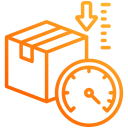From Vision to Go‑Live: How Success Was Defined
A consumer goods distributor convened operations, IT, finance, and safety leaders for two days to define five measurable outcomes. By naming must‑haves and nice‑to‑haves early, they prevented scope creep later and protected critical timelines when Black Friday volumes arrived.
From Vision to Go‑Live: How Success Was Defined
A mid‑size apparel warehouse paused for three weeks to capture true baseline metrics: pick accuracy, dock‑to‑stock time, ergonomic risk scores, and overtime costs. The resulting dataset became a fair comparison point and defused debates once automation started boosting throughput.
From Vision to Go‑Live: How Success Was Defined
One team resisted a flashy demo and instead ran a contained pilot in the slow movers aisle, where variability was ugly and data gaps existed. Proving performance under worst‑case conditions bought organizational confidence and won them an accelerated budget release.
From Vision to Go‑Live: How Success Was Defined
Lorem ipsum dolor sit amet, consectetur adipiscing elit. Ut elit tellus, luctus nec ullamcorper mattis, pulvinar dapibus leo.







